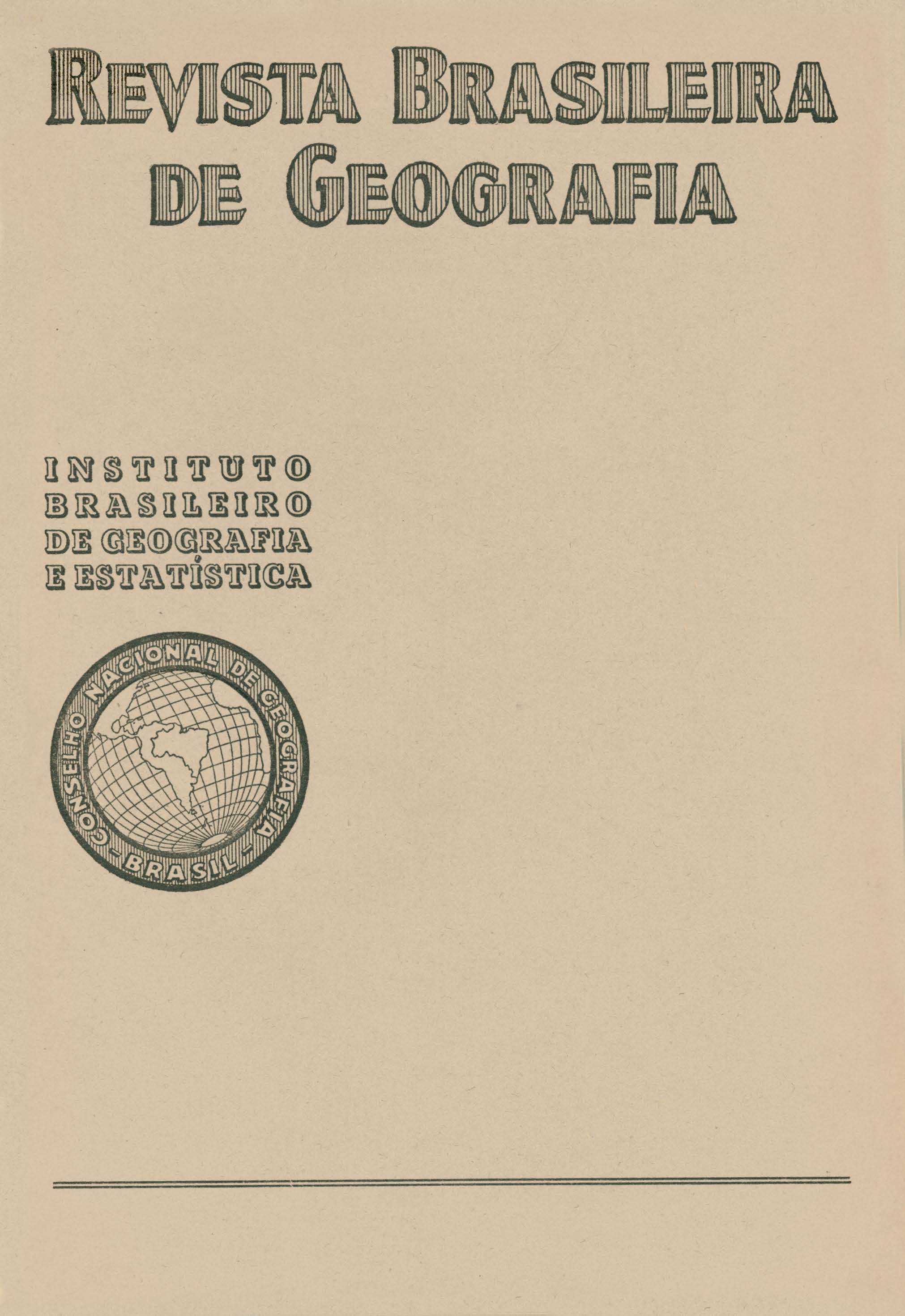Uma Viagem de reconhecimento ao Sul de Goiás
Palavras-chave:
Goiás;, Expedições Científicas;, Geografia Regional;, Colonização.Resumo
Two facts have greatly impressed the author of this work: the enormous dimensions of this country and the richness of geographical material accumulated by the C. N. G., the collection of municipal maps standing out above everything else.
For him, Goiás should no longer be considered "terra incognita" from the geographical point of view, and by virtue of its natural resources, it is destined to fulfill a decisive role in the eastward march and in the future of the Nation. His work was begun in Goiás because he wished to study the problem of colonization and the relations between the original vegetation and its transformation by human activity. He lingered to observe the westward march in the region about Anápolis. and he saw that the pioneer strip is situated en the fringe of civilization and on the periphery of inhabited areas, but in Goiás it lies, not to the west, as is the general case in Brazil, but to the east o f the old populated area.
He treats of the settling of the region by prospectors and miners, and of the change that occurred with the approach of the railroad, coming from the triangle of Minas. He compares the pioneer front to a military front, the pioneer farmer being a soldier who combats nature. Anápolis is the base of the pioneer zone in southern Goiás. He describes the plateau of Anápolis and brings out its resemblance to certain plateaus in southern Africa, the African "veld" being equivalent to the "campo" of central Brazil.
He makes a special study of the springs in certain depressions which are covered with vigorous groves of trees. For want of a better term, he calls these places "dales", and considers them of major significance for economic life and for the settlement of these open plateaus.
He describes and speculates about the city of Anápolis "the new commercial center of Goiás"; about Jaraguá, the old mining center, and now in a "strategic position as the principle stopping-place"; about Uruana, whose rural population lives in two different townships, and so on.
He describes the National Agricultural Colony of Goiás, an area of planned and controlled life, reached today by a good highway, where about eight thousand people are doing agricultural work. The purpose of this colony is the creation of small agricultural nuclei in this forested region with the duty of conserving a great part of the forest. This is not in accord with the natural disposition of our agricultural population; this point 'is discussed by the author, who allows certain doubts to take shape concerning the success of this system of rotation of crops instead of the rotation of land. The site of this colony, which constitutes, according to the author, an interesting social and economic experiment, was decided upon principally on account of the presence of the forested area, which presupposes a rich soil. A factor of first importance in any scheme of colonization is the altitude, and that of this colony is only moderately high. Information about the activities of the colony complete the interesting article by Professor Leo Waibel.






